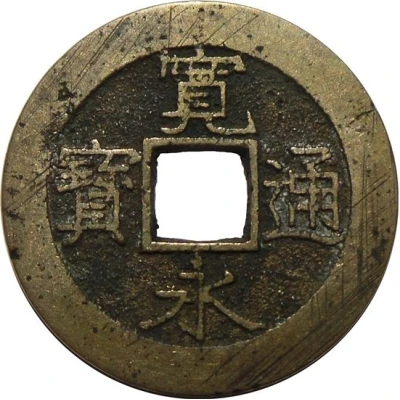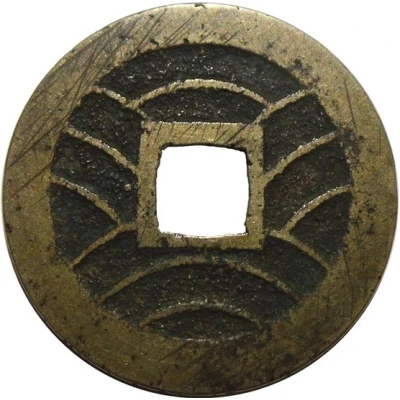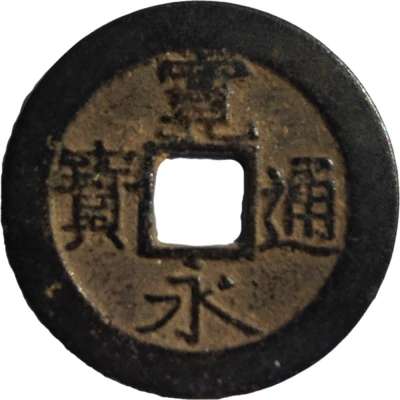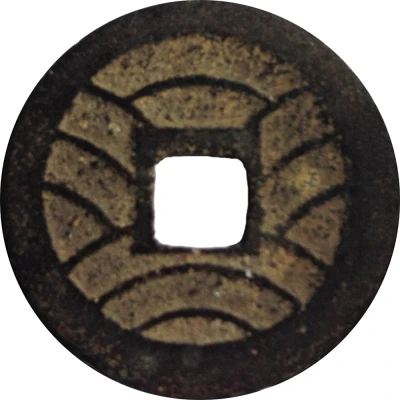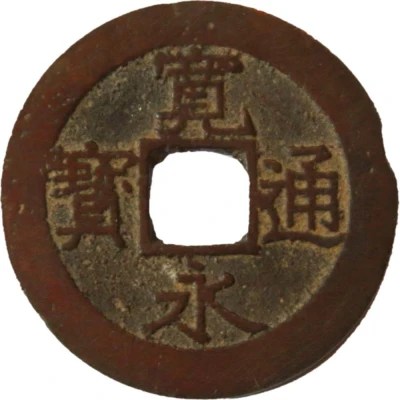
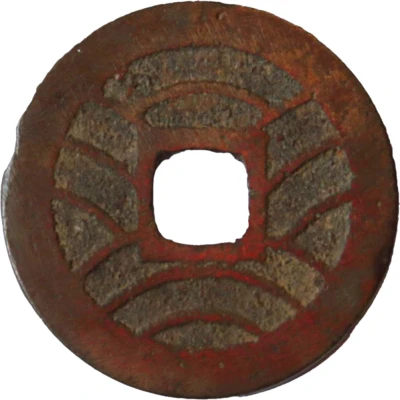

© R.J. Adams
4 Mon "Kan'eitsūhō" Bunsei Copper Alloy; 11 waves ND
| Copper | 5.40 g | 28 mm |
| Issuer | Japan |
|---|---|
| Type | Standard circulation coin |
| Years | 1821-1825 |
| Value | 4 Mon |
| Currency | Mon (683-1953) |
| Composition | Copper |
| Weight | 5.40 g |
| Diameter | 28 mm |
| Shape | Round with a square hole |
| Technique | Cast |
| Orientation | Medal alignment ↑↑ |
| Demonetized | Yes |
| Updated | 2024-10-06 |
| Numista | N#156603 |
|---|---|
| Rarity index | 58% |
Reverse
11 waves
Comment
According to David Hartill's "Early Japanese Coins" there are several varieties of this coin differentiated by composition and color. Meiwa-sen has a brassy coloration, Bunsei-sen is a reddish alloy, and Ansei-sen is a dark color.Interesting fact
One interesting fact about the Kan'eitsūhō coin is that it was minted during a time of economic reform in Japan, known as the Bunsei era (1818-1830). The government aimed to stabilize the economy and combat inflation by introducing new coinage, including the Kan'eitsūhō coin, which was made of copper and had a unique 11-wave design on its reverse side. This design was meant to symbolize the waves of the sea and represent the country's connection to the ocean. The coin's design and materials were a departure from previous coins minted in Japan, and it marked a significant change in the country's monetary policy.
Price
| Date | Mintage | VG | F | VF | XF | AU | UNC |
|---|---|---|---|---|---|---|---|
| ND (1821-1825) | - | - | - | - | - | - |
Values in the table are based on evaluations by sales realized on Internet platforms. They serve as an indication only for 4 Mon "Kan'eitsūhō" (Bunsei Copper Alloy; 11 waves) ND (1821-1825) coin.
